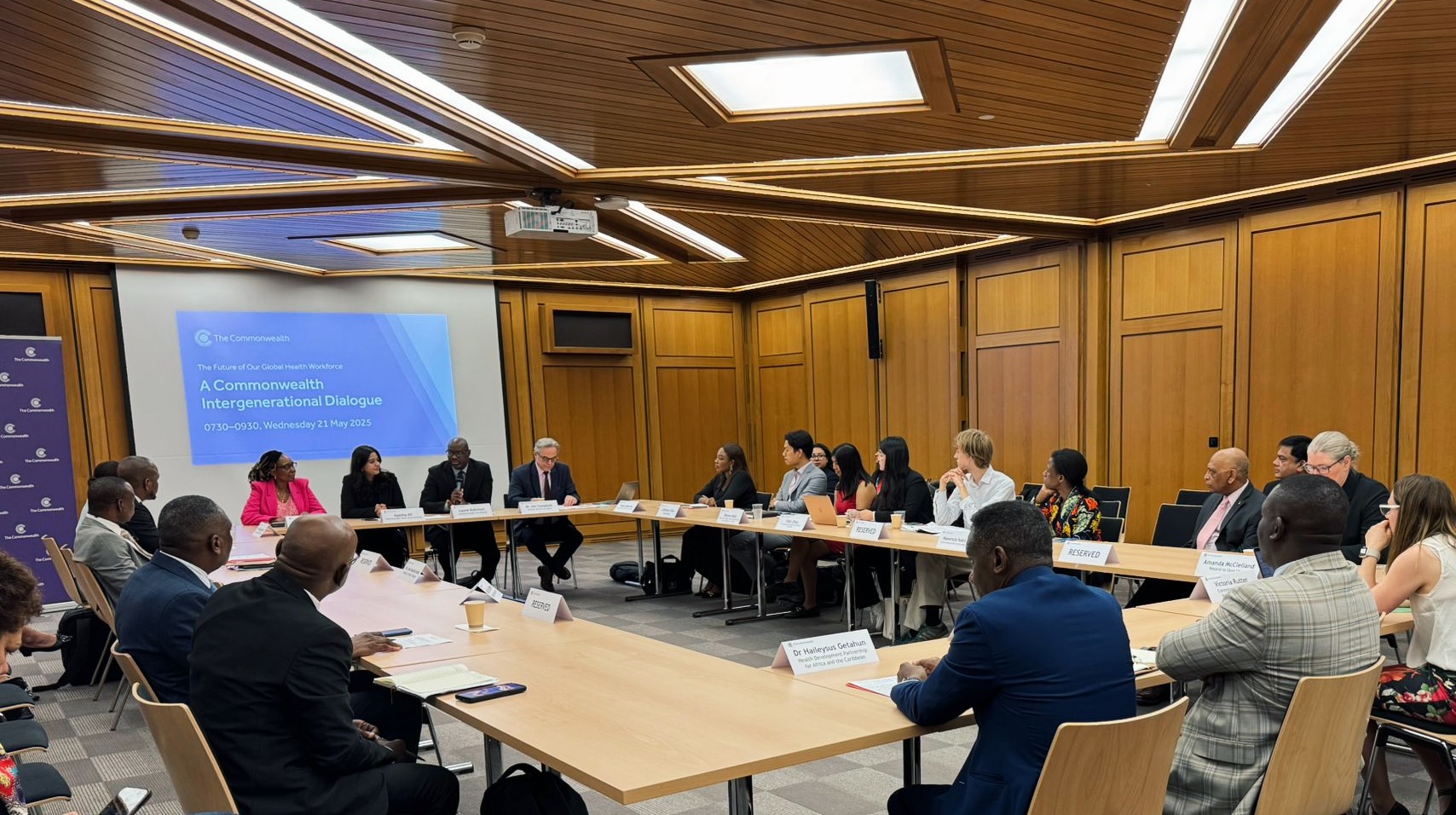Cashing in on Africa’s digital economy
January 29
Africa’s digital economy is booming—and it’s just getting started. By 2025, the continent’s digital economy is expected to grow to over $300 billion, riding on the wave of mobile access and other technologies. Commonwealth Correspondent Carole Nyemeck, 27, from Yaoundé in Cameroon, says taxing digital services and goods could bring in much-needed revenue, some of which could be ploughed back into boosting the continent’s technological growth.
The African Union, with support from the World Bank, has come up with a digital “moonshot”—an ambitious plan to bring high-speed connectivity to all the continent’s citizens and lay the foundations for a vibrant digital economy.
If this goes according to plan, a potential 1.65 to 1.71 billion Africans would be digitally connected by 2030, based on population growth projections by the United Nations. Just think how much African countries could raise through taxation of digital goods and services.
A tax is a compulsory financial charge or a type of levy imposed upon a taxpayer by a governmental authority in order to fund government expenditure and delivery of public services.
Most African countries have laws and regulations in place for taxing digital goods and services. However, many are still very basic and do not cover the whole spectrum of the growing and changing digital economy.
In Cameroon, for example, taxes are levied on digital equipment, calls and data. Phones and electronic tablets can be imported and are exempt from customs duty and tax, provided that duties are paid through a levy attached to phone calls, and are declared and sent by telecoms operators on the 15th of every month to the relevant customs service.
Downloading of applications developed in another customs zone to phones and electronic tablets attracts a flat rate of FCFA 200 per application. However, if the provider is based outside of Cameroon, there is no way to enforce the collection of this tax.
Starting this financial year, Cameroon’s government announced it would apply value-added tax (VAT) to goods and services sold on Cameroonian territory through e-commerce platforms.
In Senegal, along with the VAT, mobile consumers have to pay an additional tax charged on telecoms services at 5% of revenue, and operators also have to pay additional sector-specific taxes.
Mobile money transactions on Kenya’s digital platform M-Pesa have been subject to a tax of 10%. But with a boom in the country’s mobile money transactions, the Kenya Revenue Authority has asked government to grant them access to all mobile money transactions on this and other platforms, so that it can identify further opportunities for taxation.
It is not just the sale of digital technology and digital transactions that can provide a source of tax revenue. Data is a prized commodity. A 2019 study by global mobile operators network GSMA showed that 456 million people in Africa were connected to digital platforms. This means that they provided their data to technology companies, and the latter did not pay the appropriate digital taxes.
In response to a need for robust policies on digital economy taxation, in 2015 the Organisation for Economic Co-operation and Development (OECD) established an action plan for using value-added tax (VAT) to help countries take on the challenge.
South Africa was one of the early adopters of the policy, introducing a tax on digital goods. By February 2019, this digital tax had generated approximately $208 million in revenue.
Although there are many opportunities to generate revenue from the digital economy, there are a number of challenges countries would need to overcome.
How do you impose tax based on the traditional taxation principle of physical presence when many digital economies are virtual or are based in locations that are favourable to tax purposes? Also, what portion of profits should be taxed?
The OECD is leading work on digital taxation under two pillars:
Pillar One: Re-allocation of taxing rights
- Addresses the question of business presence and activities without physical presence;
- Will determine where tax should be paid and on what basis;
- Will determine what portion of profits could or should be taxed in the jurisdictions where customers and/or users are located;
Pillar Two: Global anti-base erosion mechanism
- Will help to stop the shifting of profits to low or no-tax jurisdictions facilitated by new technologies;
- Will ensure a minimum level of tax is paid by multinational enterprises (MNEs);
- Levels the playing field between traditional and digital companies.
African governments have already begun to tap into taxation of the digital economy. However, they should first focus taxation on digital calls and data rather than on equipment and specific sectors.
A 2009 study showed that in Kenya VAT exemptions on mobile handsets contributed to growth and employment in the country. Rwanda and Senegal have successfully followed similar exemptions on mobile handsets.
Secondly, African governments should allocate some of the revenue from digital taxation to resourcing technology, for example paying for free internet, providing free access to digital resources and skills-building in schools, improving the country’s digital infrastructure, acquiring state-of-the-art satellites and broadband networks, and reducing the cost of connectivity to ensure that no one is left behind.
……………………………………………………………………………………………………………………………….
………………………………………………………………………………………………………………………….
………………………………………………………………………………………………………………………….
……………………………………………………………………………………………………………………………….





